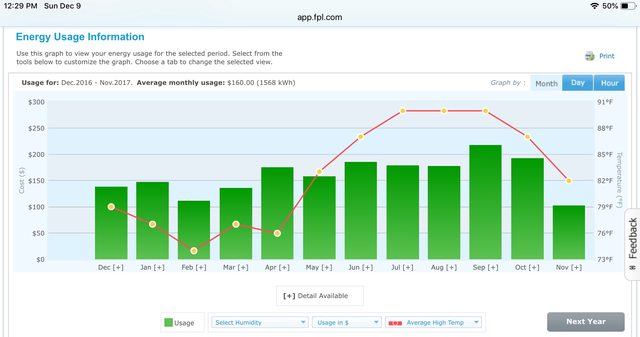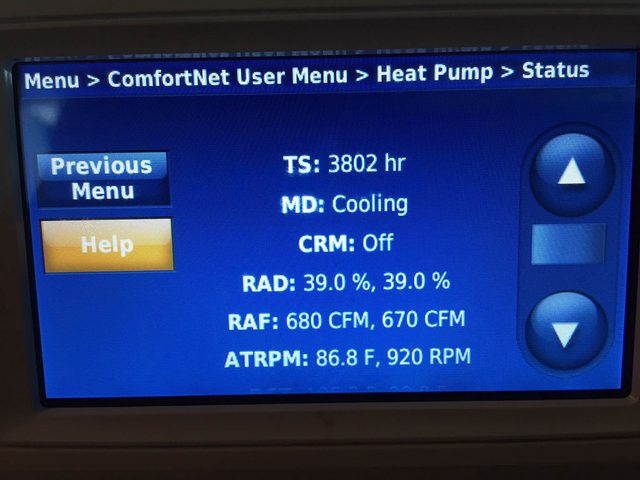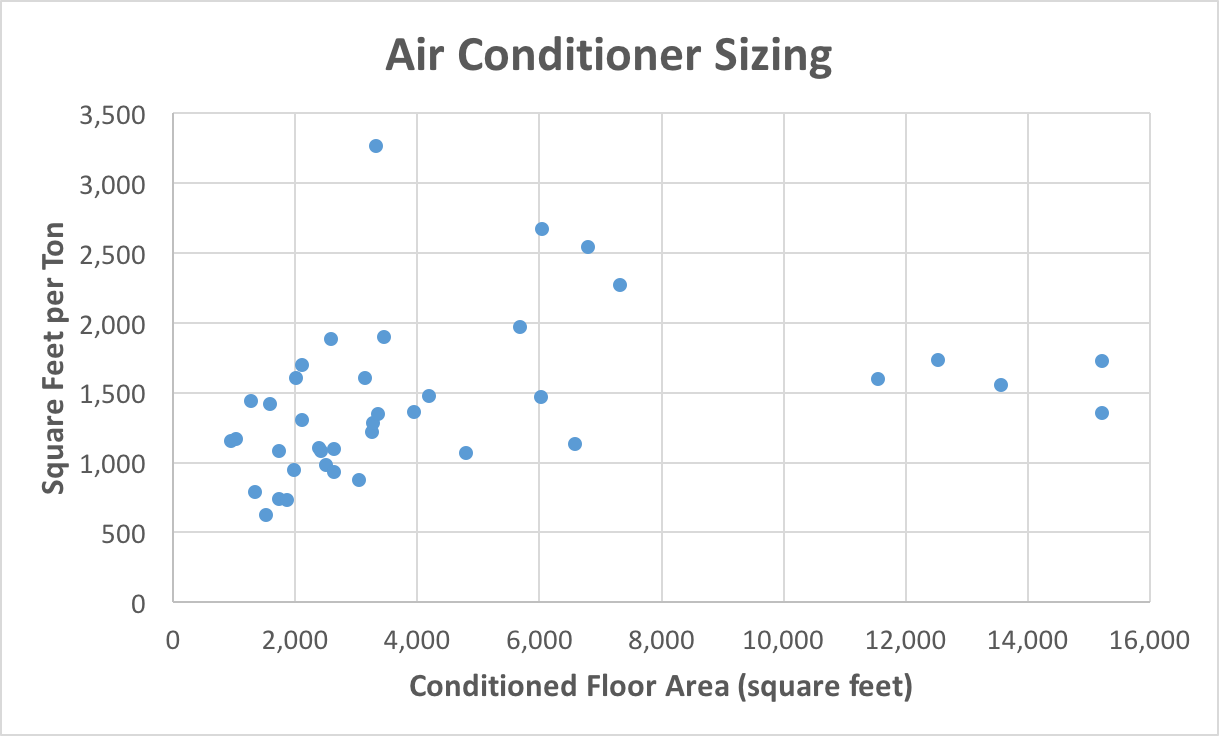Mike Mc
New Member
Hi,
My house is in the Sacramento area (a Hot-Dry climate) and the power company is forcing everybody to move to a TOU (time of use) plan that charges upto 38 cents per KWh in the summer, so I'm looking for ways to reduce electricity usage and AC is the biggest power consumer.
My house is 3000 sqft 2-story facing south and has a 12 year old 120kBTU natural gas 2 stage furnace with a 5 ton AC coil. It has a 20" round return and three 12" round hard pipe supply (upper west, upper east, downstairs). Each supply has a damper. Currently the upper east and west supplies are controlled as a single zone (two of the 12" dampers are open for upstairs). Only one 12" damper is open when downstairs runs. Each 12" supply has 3-4 floor mounted registers.
Since the zone controller has a unused 3rd zone and the system has 3 dampers, I'm considering adding another thermostat and controlling the upper east and upper west supplies separately. My concern is restricting a 120kBTU / 5 ton system to a single 12" round supply could damage or shorten the service life of the system, cause leaks in the ducts and increase duct noise. My research suggest this system should have 1800-2000 CFM, but a 12 round pipe should only have 700-750 CFM. I have a similar concern in heating mode, but slightly less so since the 1st stage heat is usually sufficient and has lower CFM requirements.
Is there a minimum CFM requirement for this system? Are there other things to consider before separating the control of the upper west and east zones? Google couldn't find any specs for these units.
Could I potentially save money separating the upper zones? I realize it is difficult to answer since there are lots of variables with 4-5 (adults and teenagers) coming and going all day. The potential savings would come from not cooling or heating one of the upper zones as much or at all during the day.
Thanks
-Mike
Equipment:
2 Ecobee4 thermostat (just installed)
American Standard Freedom 90 2-Stage furnace AUX120R960W5 (92 AFLUE)
American Standard AC coil TXC065S3HPC0 (SEER 13)
Honeywell universal mini zone controller (supports 3 zones).
My house is in the Sacramento area (a Hot-Dry climate) and the power company is forcing everybody to move to a TOU (time of use) plan that charges upto 38 cents per KWh in the summer, so I'm looking for ways to reduce electricity usage and AC is the biggest power consumer.
My house is 3000 sqft 2-story facing south and has a 12 year old 120kBTU natural gas 2 stage furnace with a 5 ton AC coil. It has a 20" round return and three 12" round hard pipe supply (upper west, upper east, downstairs). Each supply has a damper. Currently the upper east and west supplies are controlled as a single zone (two of the 12" dampers are open for upstairs). Only one 12" damper is open when downstairs runs. Each 12" supply has 3-4 floor mounted registers.
Since the zone controller has a unused 3rd zone and the system has 3 dampers, I'm considering adding another thermostat and controlling the upper east and upper west supplies separately. My concern is restricting a 120kBTU / 5 ton system to a single 12" round supply could damage or shorten the service life of the system, cause leaks in the ducts and increase duct noise. My research suggest this system should have 1800-2000 CFM, but a 12 round pipe should only have 700-750 CFM. I have a similar concern in heating mode, but slightly less so since the 1st stage heat is usually sufficient and has lower CFM requirements.
Is there a minimum CFM requirement for this system? Are there other things to consider before separating the control of the upper west and east zones? Google couldn't find any specs for these units.
Could I potentially save money separating the upper zones? I realize it is difficult to answer since there are lots of variables with 4-5 (adults and teenagers) coming and going all day. The potential savings would come from not cooling or heating one of the upper zones as much or at all during the day.
Thanks
-Mike
Equipment:
2 Ecobee4 thermostat (just installed)
American Standard Freedom 90 2-Stage furnace AUX120R960W5 (92 AFLUE)
American Standard AC coil TXC065S3HPC0 (SEER 13)
Honeywell universal mini zone controller (supports 3 zones).



